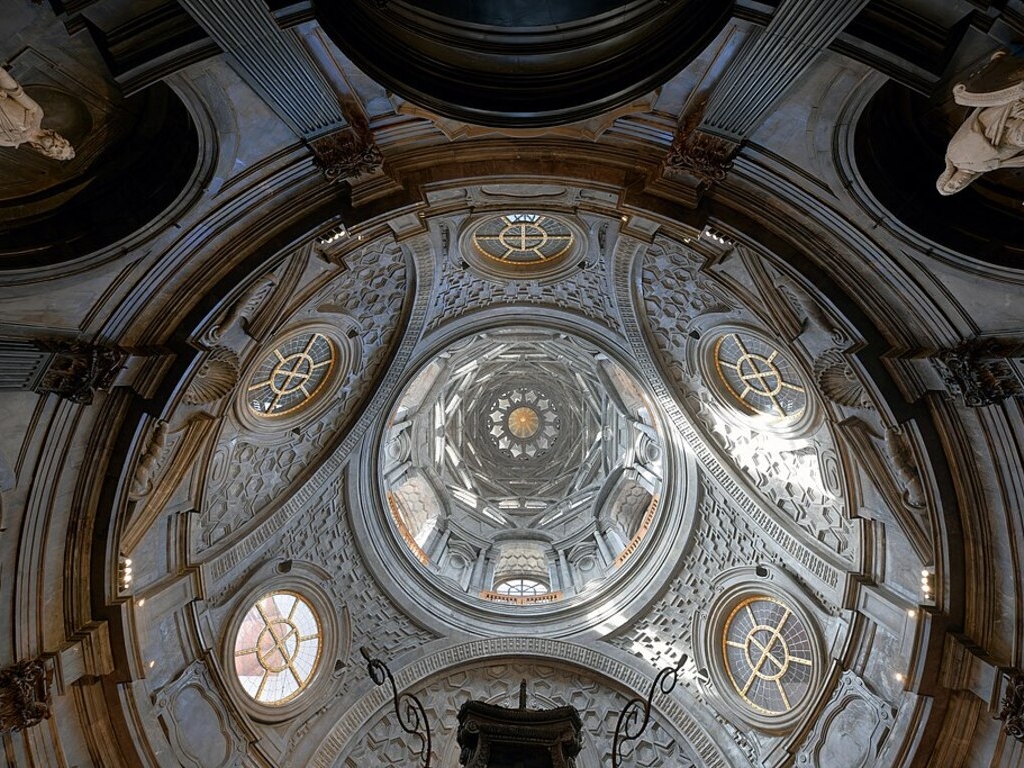Initially kept in Chambery, the Holy Shroud was transferred to Turin in 1578 by Emanuele Filiberto with the intention of ingratiating himself with Cardinal-Archbishop Carlo Borromeo of Milan.
In order to best preserve a relic that had been in the hands of the House of Savoy since 1453, Emanuele Filiberto ordered, in his will, that a place of worship worthy of the precious linen be built with the proceeds of the alms collected at his funeral. To respect his father's wishes, Carlo Emanuele of Savoy commissioned the project for the construction of a chapel from Carlo di Castellamonte, who, in collaboration with Vitozzi, began work on the project between 1610 and 1611.
Initially with an elliptical plan and set between the Ducal Palace and the Cathedral, the project was reworked several times during the period of Carlo Emanuele II with Bernardino Quadri in collaboration with Amedeo di Castellamonte, but the structural criticalities that emerged led to a change of course.
In 1668 the project passed into the hands of the famous Guarino Guarini, who unfortunately could not do much about the planimetric layout given the state of the works, but he intervened forcefully in the aesthetic taste and found solutions to strengthen a rather weak and precarious structure.
In bringing together aesthetic and structural needs Guarini introduced drastic innovations aimed at creating a whirling effect of ascent towards infinity, made up of plays of light and shadow and ingenious optical effects.
In May 1680, although the work was not completely finished, the first mass was celebrated by Guarini himself, who died three years later, leaving unfinished a staircase, the floors and above all the altar-reliquary that was to house the Holy Shroud.
The work was completed by Antonio Bertola, a pupil of the famous Donato Rossetti, in 1694, after almost a century of construction work.
In 1990 the chapel was closed to the public because of some structural subsidence and during a subsequent building site a dangerous fire damaged the building and risked destroying the Holy Shroud, which was miraculously saved by the firemen.
The works for the conservative restoration returned it to the public only in 2018 and cost more than 30 million euros, but the Holy Shroud was moved to a shrine kept under the Royal Tribune of the Cathedral of Turin.
The shroud chapel is now considered to be one of the most daring and complex pieces of architecture of European Baroque.
For more information, click here.
Image credit: Paris Orlando - Wikipedia
